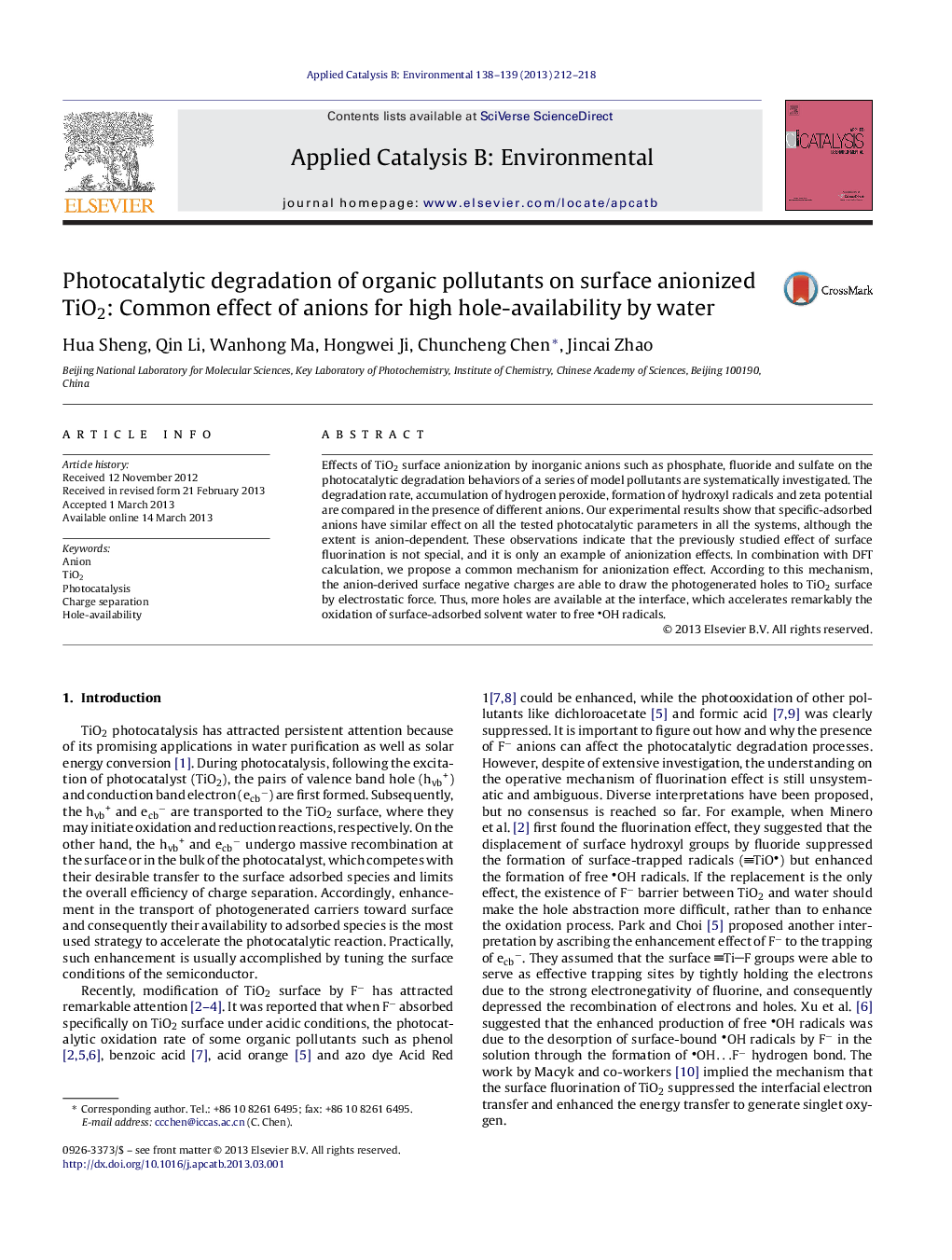| Article ID | Journal | Published Year | Pages | File Type |
|---|---|---|---|---|
| 46225 | Applied Catalysis B: Environmental | 2013 | 7 Pages |
•Specific-adsorbed anions such as F−, PO43−, and SO42− cause similar effects on the photocatalytic process of TiO2.•These effects originate from a common mechanism that is based on the anion-derived surface negative charges.•The anion-derived surface negative charges draw the photogenerated holes to the TiO2 surface by the electrostatic force and consequently enhance the oxidation of the surface adsorbed water molecules.
Effects of TiO2 surface anionization by inorganic anions such as phosphate, fluoride and sulfate on the photocatalytic degradation behaviors of a series of model pollutants are systematically investigated. The degradation rate, accumulation of hydrogen peroxide, formation of hydroxyl radicals and zeta potential are compared in the presence of different anions. Our experimental results show that specific-adsorbed anions have similar effect on all the tested photocatalytic parameters in all the systems, although the extent is anion-dependent. These observations indicate that the previously studied effect of surface fluorination is not special, and it is only an example of anionization effects. In combination with DFT calculation, we propose a common mechanism for anionization effect. According to this mechanism, the anion-derived surface negative charges are able to draw the photogenerated holes to TiO2 surface by electrostatic force. Thus, more holes are available at the interface, which accelerates remarkably the oxidation of surface-adsorbed solvent water to free OH radicals.
Graphical abstractFigure optionsDownload full-size imageDownload as PowerPoint slide
